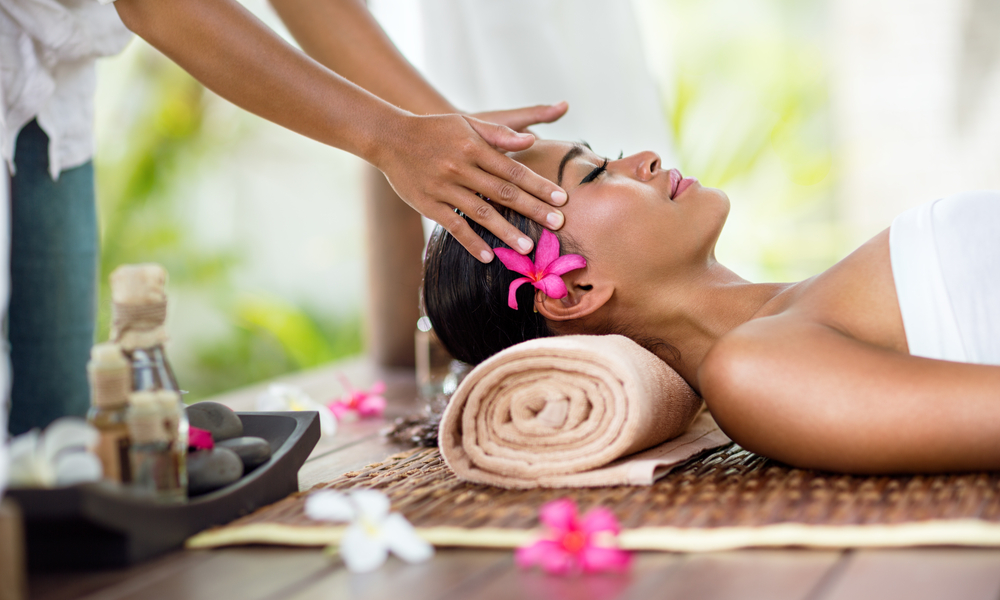Squalane has become a buzzword in the beauty industry, known for its impressive benefits for both skin and hair. Derived from natural sources, squalane is praised for its moisturizing properties, anti-aging effects, and ability to improve hair health. This guide will explore what squalane is, how it works, and why it has become a must-have in your beauty routine.
What is Squalane?
Squalane is a hydrogenated form of squalene, a lipid naturally produced by our skin cells. Squalene is found in human sebum and is crucial for maintaining skin hydration and protecting against environmental damage. However, squalene is unstable and prone to oxidation, which can lead to skin issues. Squalane, on the other hand, is stable and has a longer shelf life, making it ideal for use in skincare and haircare products.
History and Background
Historically, squalane was sourced from shark liver oil, leading to ethical and environmental concerns. Today, most squalane is derived from plant sources such as olives and sugarcane, making it a more sustainable and cruelty-free option. Its use in cosmetics dates back decades, but recent advancements have made it more accessible and popular than ever.
How Squalane Works
Squalane has a unique molecular structure mimics our skin’s natural oils, allowing it to be easily absorbed without leaving a greasy residue. Its lightweight nature makes it suitable for all skin types, including oily and acne-prone skin. Squalane provides intense hydration, forms a barrier to lock in moisture, and protects the skin from environmental damage.
Benefits of Squalane for Skin
Moisturizing Properties
Squalane is an excellent moisturizer, helping to keep the skin hydrated and supple. It penetrates deep into the skin, providing long-lasting moisture without clogging pores.
Anti-Aging Effects
Squalane helps reduce the appearance of fine lines and wrinkles by promoting collagen production and improving skin elasticity. Its antioxidant properties also protect the skin from free radical damage, which can accelerate aging.
Skin Barrier Protection
By reinforcing the skin’s natural barrier, squalane helps prevent moisture loss and shields the skin from environmental aggressors like pollution and UV radiation.
Antioxidant Properties
Squalane is rich in antioxidants, which help neutralize free radicals and protect the skin from oxidative stress. This can lead to a more youthful and radiant complexion.
Suitable for All Skin Types
Squalane is non-comedogenic and hypoallergenic, making it suitable for all skin types, including sensitive and acne-prone skin. It’s gentle enough for everyday use and can help soothe irritated skin.
Benefits of Squalane for Hair
Hydration and Moisture Retention
Squalane helps keep hair hydrated by locking in moisture. It can be used as a pre-shampoo treatment or added to conditioners to boost hydration.
Improved Hair Elasticity
By nourishing the hair shaft, squalane improves hair elasticity and reduces breakage. This leads to stronger, healthier hair that can withstand styling and environmental stress.
Prevention of Breakage and Split Ends
Regular use of squalane can help prevent split ends and breakage by strengthening the hair and providing essential nutrients.
Enhancing Shine and Softness
Squalane adds a natural shine and softness to the hair without making it greasy. It smooths the hair cuticle, resulting in a sleek and polished look.
Scalp Health and Nourishment
Squalane can also benefit the scalp by maintaining moisture balance and soothing dryness and irritation. A healthy scalp is essential for healthy hair growth.
. Squalane in Skincare Products
Types of Products Containing Squalane
Squalane can be found in various skincare products, including serums, creams, oils, and moisturizers. Each product type offers unique benefits, and incorporating multiple forms of squalane into your routine can provide comprehensive care.
How to Choose the Right Squalane Product
When selecting a squalane product, consider your skin type and specific concerns. Look for high-quality, plant-derived squalane and products free from harmful additives.
Recommended Skincare Routines with Villiers Valley
Incorporate squalane into your daily skincare routine by using a squalane serum or oil after cleansing and toning, followed by a moisturizer. For enhanced hydration, consider using a squalane-infused night cream. Our Dark Spot Eraser Cream from Villiers Valley is a highly recommended product. Its active ingredient, squalane, helps remove dark spots and prevents moisture loss.
Squalane in Haircare Products
Types of Haircare Products Containing Squalane
Squalane can be found in shampoos, conditioners, leave-in treatments, and hair oils. These products help hydrate and protect the hair while enhancing its natural shine.
How to Incorporate Squalane into Your Haircare Routine
To incorporate squalane into your haircare routine, start with a squalane-infused shampoo and conditioner. Follow with a leave-in treatment or hair oil to lock in moisture and provide additional nourishment.
Recommended Haircare Routines with Squalane
Use squalane products regularly to maintain hydration and health. For an extra boost, apply a squalane hair mask once a week to deeply nourish and repair your hair.
Comparative Analysis
Squalane vs. Other Moisturizing Ingredients
Compared to other moisturizers like hyaluronic acid and glycerin, squalane offers unique benefits. While hyaluronic acid attracts moisture to the skin, squalane locks it in, making them a great combination. Glycerin is also effective but can be sticky, whereas squalane is lightweight and non-greasy.
Squalane vs. Other Haircare Ingredients
In hair care, squalane stands out against ingredients like argan oil and coconut oil. Argan oil is rich in nutrients but can be heavy for some hair types. Coconut oil is highly moisturizing but can be difficult to wash out. Squalane offers a balanced solution, providing hydration without weighing down the hair.
Potential Side Effects and Precautions
Allergic Reactions and Sensitivity
Squalane is generally safe and well-tolerated, but some individuals may experience allergic reactions or sensitivity. Always patch-test new products to ensure compatibility with your skin.
How to Test for Skin Compatibility
To test for skin compatibility, apply a small amount of the product to a discreet area of your skin, such as behind your ear or on your wrist. Wait 24 hours to check for any adverse reactions before using it on your face or hair.
Guidelines for Safe Usage
Follow product instructions and avoid overuse to prevent any potential side effects. If you experience irritation or discomfort, discontinue use and consult a dermatologist.
Sustainability and Ethical Considerations
Sourcing and Environmental Impact
Choose squalane products derived from sustainable sources, such as olives or sugarcane. These plant-based options are more environmentally friendly and reduce the impact on marine life.
Cruelty-Free and Vegan Options
Many squalane products are now cruelty-free and vegan, ensuring that no animals are harmed in the production process. Look for certifications and labels that indicate these ethical practices.
Brands with Sustainable Practices
Several brands prioritize sustainability and ethical sourcing. Supporting these companies helps promote environmentally responsible practices in the beauty industry.
Expert Opinions and Testimonials
Dermatologists’ Perspectives on Squalane
Dermatologists often recommend squalane for its moisturizing and anti-aging properties. Its ability to mimic the skin’s natural oils makes it a versatile and effective ingredient for various skin concerns.
User Testimonials and Experiences
Many users report positive experiences with squalane, noting improvements in skin hydration, texture, and overall appearance. Haircare enthusiasts also praise squalane for its ability to add shine and reduce frizz.
Case Studies and Real-Life Examples
Case studies and real-life examples highlight the transformative effects of squalane on different skin and hair types. These stories provide valuable insights into the versatility and effectiveness of this ingredient.
DIY Squalane Treatments
Homemade Squalane Skincare Recipes
Create your squalane skincare treatments by mixing squalane oil with other beneficial ingredients like aloe vera, essential oils, or honey. These DIY recipes can be customized to address specific skin concerns.
DIY Hair Masks and Treatments with Squalane
For hair, combine squalane oil with coconut oil, argan oil, or avocado for a nourishing hair mask. Apply the mixture to your hair and scalp, leave it on for 20-30 minutes, then rinse thoroughly.
Tips for Safe and Effective DIY Usage
When making DIY treatments, ensure you use high-quality, pure squalane oil. Perform patch tests and follow recommended guidelines to avoid any adverse reactions.
Frequently Asked Questions (FAQs)
Common Queries About Squalane
- Is squalane safe for sensitive skin? Yes, squalane is gentle and non-irritating, making it suitable for sensitive skin.
- Can squalane cause acne? Squalane is non-comedogenic and does not clog pores, so it’s unlikely to cause acne.
- How often should I use squalane? Squalane can be used daily, both in the morning and evening, as part of your skincare routine.
Clarifications and Detailed Answers
- Can I use squalane with other active ingredients? Squalane pairs well with other active ingredients like retinol, vitamin C, and hyaluronic acid.
- Is squalane suitable for oily skin? Yes, squalane is lightweight and absorbs quickly, making it ideal for oily skin.
Conclusion
Squalane is a versatile and beneficial ingredient for both skin and hair. Its moisturizing, anti-aging, and protective









